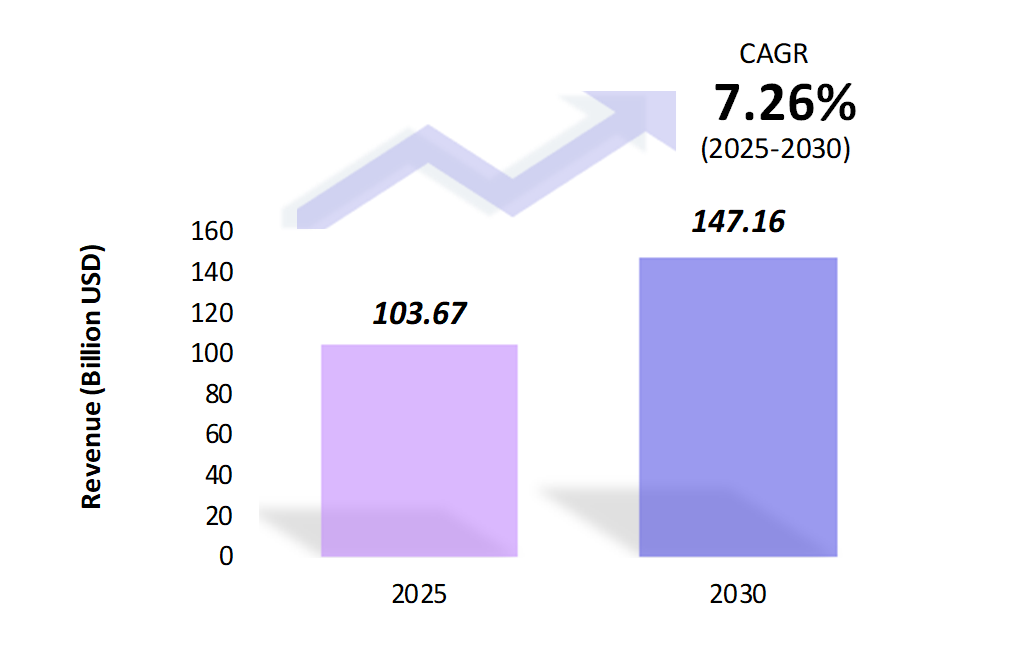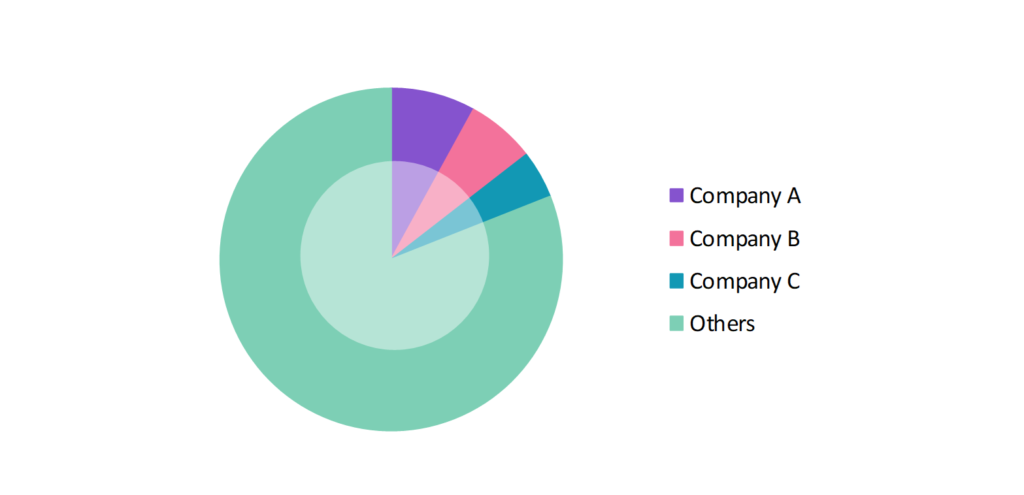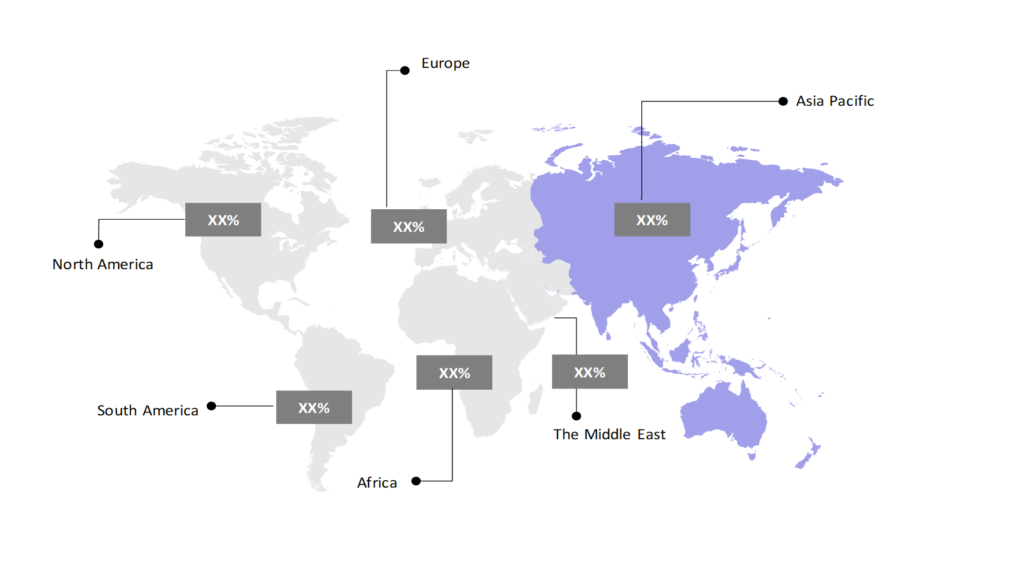Baby Food Market: Size, Share, Trends & Forecast (2024-2029)
The market report offers a detailed analysis segmented by Type (Milk Formula, Dried Baby Food, Ready to Feed Baby Food, Others); by Distribution Channel (Drugstores/Pharmacies, Supermarkets/Hypermarkets, Convenience Stores, Online Channels, Others); by Geography (North America, South America, Asia Pacific, Europe, The Middle East, Africa).
Outlook

- The baby food market is estimated to be at USD 103.67 Bn in 2025 and is anticipated to reach USD 147.16 Bn in 2030.
- The baby food market is registering a CAGR of 7.26% during the forecast period 2025-2030.
- The global baby food market is expected to experience significant growth, fueled by increasing awareness of infant nutrition, rising disposable incomes, and a growing number of working parents seeking convenient and nutritious solutions for feeding their babies.
Request a free sample.
Ecosystem

- The global baby food industry participants are continuously developing strategies to preserve a competitive advantage.
- These companies expanded their organic and plant-based baby food line through investments, acquisitions, research & developments, partnerships, and technological launches.
- Several important entities in the baby food market include Nestlé S.A.; Danone; Reckitt Benckiser Group Plc; Abbott Laboratories; Feihe International, Inc.; and others.
Ask for customization.
Findings
| Attributes | Values |
|---|---|
| Historical Period | 2019-2023 |
| Base Year | 2024 |
| Forecast Period | 2025-2030 |
| Market Size (2025) | USD 103.67 Bn |
| Market Size (2030) | USD 147.16 Bn |
| Growth Rate | 7.26% CAGR from 2025 to 2030 |
| Key Segments | Type (Milk Formula, Dried Baby Food, Ready to Feed Baby Food, Others); Distribution Channel (Drugstores/Pharmacies, Supermarkets/Hypermarkets, Convenience Stores, Online Channels, Others); Geography (North America, South America, Asia Pacific, Europe, The Middle East, Africa) |
| Key Vendors | Nestlé S.A.; Danone; Reckitt Benckiser Group Plc; Abbott Laboratories; Feihe International, Inc. |
| Key Countries | The US; Canada; Mexico; Brazil; Argentina; Chile; China; India; Japan; The UK; Germany; France; UAE; Saudi Arabia; Nigeria; South Africa |
| Largest Market | Asia Pacific |
Get a free quote.
Trends
- Introduction of Fortified Baby Foods: The inclusion of fortified ingredients, such as DHA, iron, and probiotics, has become a significant trend. Fortified baby foods are designed to support infant development, addressing nutritional deficiencies that might arise in the early stages of growth. In 2022, Nestlé introduced Gerber products enriched with DHA and prebiotics to promote brain development and digestive health.
- Emergence of Plant-Based and Vegan Baby Food Options: Plant-based and vegan baby food options are becoming more popular, offering nutritious alternatives for families seeking to raise their children on plant-based diets. These products often feature ingredients like fruits, vegetables, grains, and legumes, ensuring that babies receive essential nutrients while aligning with a vegan lifestyle.
- Emphasis on Organic Baby Food: Organic baby food is emphasized as parents increasingly seek healthier infant options. These products, made from ingredients grown without synthetic pesticides or fertilizers, offer pureed fruits, vegetables, and grains rich in essential nutrients. As more families prioritize high-quality, natural ingredients, organic baby food is becoming preferred for those starting their children on solid foods.
Speak to analyst.
Catalysts
- Demand for Convenient Baby Food Products Among Working Mothers: The rising number of working mothers drives demand for convenient baby food products that prioritize nutrition without sacrificing time. As busy lifestyles become the norm, parents seek easy-to-prepare, wholesome options that cater to their infants’ dietary needs. This shift highlights the importance of innovative packaging and ready-to-eat solutions, positioning brands to tap into a growing market focused on convenience and health.
- Increasing Awareness of Infant Nutrition: Rising awareness of the critical role of nutrition in early childhood development is driving the baby food market. Governments and healthcare professionals emphasize the importance of balanced nutrition in babies’ growth, leading parents to seek fortified and specialized baby food products.
- Focus on Clean-Label Products: Clean-label baby food, characterized by simple, recognizable ingredients, has gained popularity. Parents are increasingly seeking transparency in product formulations. In 2023, Gerber launched the “Freshful Start” line, emphasizing clean labels and wholesome ingredients, catering to parents’ growing concerns about food safety and authenticity.
Inquire before buying.
Restraints
- Stringent Regulatory Standards: The baby food market is highly regulated, with strict safety and quality standards imposed by governments. Compliance with regulations such as the European Food Safety Authority (EFSA) and the US Food and Drug Administration (FDA) can increase production costs for manufacturers. In 2022, several baby food companies faced challenges adhering to new EU regulations on maximum pesticide levels, which led to product recalls.
- High Cost of Organic and Premium Products: The rising demand for organic and premium baby food products has increased prices, limiting their market penetration, particularly in low-income regions. Many families struggle to afford these higher-priced options, leading them to opt for more affordable, non-organic alternatives. This cost barrier presents a significant challenge for brands seeking to broaden their reach while ensuring that nutritious baby food is accessible to all families.
- Concerns Over Product Recalls and Safety Issues: Product recalls due to contamination concerns have significantly impacted consumer trust and brand reputation in the baby food market. These incidents raise alarms about food safety, leading to hesitation among parents when selecting baby food products. In July 2024, Baby Gourmet Foods announced a nationwide recall of its Baby Gourmet Organic Banana, Raisin Oatmeal, and Organic Whole Grain Cereal from in-store and online retailers. This action was prompted by potential contamination with Cronobacter spp.
Personalize this research.
Hotspot

Explore purchase options.
Table of Contents
| 1. Introduction 1.1. Research Methodology 1.2. Scope of the Study 2. Market Overview / Executive Summary 2.1. Global Baby Food Market (2019 – 2023) 2.2. Global Baby Food Market (2024 – 2030) 3. Market Segmentation 3.1. Global Baby Food Market by Type 3.1.1. Milk Formula 3.1.2. Dried Baby Food 3.1.3. Ready to Feed Baby Food 3.1.4. Others 3.2. Global Baby Food Market by Distribution Channel 3.2.1. Drugstores/ Pharmacies 3.2.2. Supermarkets/ Hypermarkets 3.2.3. Convenience Stores 3.2.4. Online Channels 3.2.5. Others 4. Regional Segmentation 4.1. North America 4.1.1. The US 4.1.2. Canada 4.1.3. Mexico 4.2. South America 4.2.1. Brazil 4.2.2. Argentina 4.2.3. Chile 4.2.4. Rest of South America 4.3. Asia Pacific 4.3.1. China 4.3.2. India 4.3.3. Japan 4.3.4. Rest of Asia Pacific 4.4. Europe 4.4.1. The UK 4.4.2. Germany 4.4.3. France 4.4.4. Rest of Europe 4.5. The Middle East 4.5.1. UAE 4.5.2. Saudi Arabia 4.5.3. Rest of the Middle East 4.6. Africa 4.6.1. Nigeria 4.6.2. South Africa 4.6.3. Rest of Africa 5. Value Chain Analysis of the Global Baby Food Market 6. Porter Five Forces Analysis 6.1. Threats of New Entrants 6.2. Threats of Substitutes 6.3. Bargaining Power of Buyers 6.4. Bargaining Power of Suppliers 6.5. Competition in the Industry 7. Trends, Drivers and Challenges Analysis 7.1. Market Trends 7.1.1. Market Trend 1 7.1.2. Market Trend 2 7.1.3. Market Trend 3 7.2. Market Drivers 7.2.1. Market Driver 1 7.2.2. Market Driver 2 7.2.3. Market Driver 3 7.3. Market Challenges 7.3.1. Market Challenge 1 7.3.2. Market Challenge 2 7.3.3. Market Challenge 3 8. Opportunities Analysis 8.1. Market Opportunity 1 8.2. Market Opportunity 2 8.3. Market Opportunity 3 9. Competitive Landscape 9.1. Nestlé S.A. 9.2. Danone 9.3. Reckitt Benckiser Group Plc 9.4. Abbott Laboratories 9.5. Feihe International, Inc. 9.6. Company 6 9.7. Company 7 9.8. Company 8 9.9. Company 9 9.10. Company 10 |
Know the research methodology.
Baby Food Market – FAQs
1. What is the current size of the baby food market?
Ans. In 2025, the baby food market size is USD 103.67 Bn.
2. Who are the major vendors in the baby food market?
Ans. The major vendors in the baby food market are Nestlé S.A.; Danone; Reckitt Benckiser Group Plc; Abbott Laboratories; Feihe International, Inc.
3. Which segments are covered under the baby food market segments analysis?
Ans. The baby food market report offers in-depth insights into Type, Distribution Channel, and Geography.
